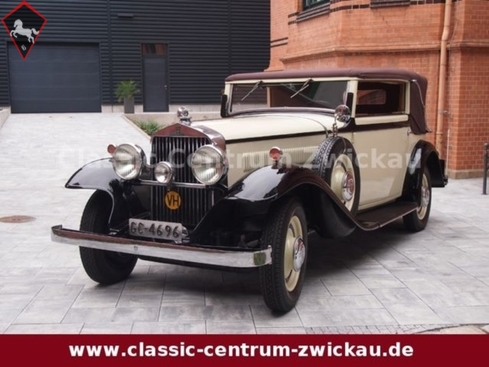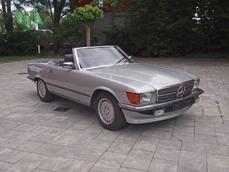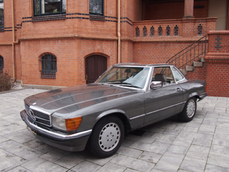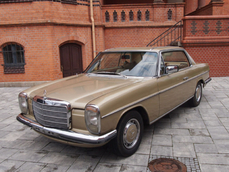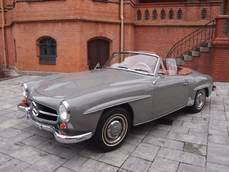Horch 8 4 ltr. Typ 410/440/710 1932
General description :
Beim Horch 410 handelt es sich um einen Vertreter der sogenannten Acht-Zylinder-Ära von Horch (1927 – 1940), in der viele Horchmodelle mit einem Achtzylinder-Reihenmotor ausgerüstet wurden. Der 1926 erstmals vorgestellte Motor wurde beworben als „Schnell. Sicher. Geräuschlos“. Der Horch 410 ist mit einem Motor der zweiten Generation Achtzylinder mit einer Leistung von 80 PS ausgerüstet. Das Modell 410 wurde 1931 bis 1933 in verschiedenen Ausführungen gebaut - davon nur 258 Fahrzeuge als 2-türiges Cabriolet.
Bei diesem Fahrzeug handelt es sich um ein Cabriolet aus dem Jahr 1932. Dieser Horch wurde 1932 nach Gran Canaria exportiert und befand sich fast 50 Jahre im Besitz einer deutschen Unternehmerfamilie aus Las Palmas auf der spanischen Insel Gran Canaria. 1980 wurde der Horch an ein privates Automobilmuseum verkauft, wo er bis 1988 restauriert wurde.
Das Fahrzeug ist fahrbereit und befindet sich optisch wie technisch in sehr gutem Zustand.
http://home.mobile.de/CLASSICCENTRUMZWICKAUGMBHCOKG#des_210426170
1932 Horch 8 4 ltr. Typ 410/440/710 is listed sold on ClassicDigest in Breithauptstraße 3-5DE-08056 Zwickau by Auto Dealer for Not priced.
Car Facts
Car type : Car Make : Horch Model : 8 4 ltr. Typ 410/440/710 Engine size : 4.0 Model Year : 1932 Sub type : Convertible Location : Breithauptstraße 3-5DE-08056 Zwickau
Sold
Seller Information
Sold
Other cars listed for sale by this dealer
About Horch
Horch, the German luxury automobile manufacturer, often stood in the shadow of its more renowned rivals, such as Mercedes-Benz and BMW. Yet, it had a unique and noteworthy story to tell in the world of luxury cars.Founding of Horch:
Horch was founded in 1904 by a visionary engineer named August Horch. The company was based in Zwickau, Germany, and it quickly gained a reputation for producing high-quality, finely crafted automobiles.
Rivalry with Mercedes-Benz:
One of the biggest challenges Horch faced was the fierce competition with Mercedes-Benz, the giant of German luxury automakers. Mercedes-Benz was a household name, and its cars were synonymous with luxury and performance. This rivalry often placed Horch in the shadows.
Engineering Excellence:
Horch, however, was no slouch in the engineering department. The company was responsible for several innovations, including the introduction of a straight-eight engine. These engineering feats helped Horch gain recognition for its performance and reliability.
Merging into Auto Union:
In 1932, Horch, along with Audi, DKW, and Wanderer, merged to form Auto Union. The four interlocking rings in Audi's logo symbolized this union. Under the Auto Union umbrella, Horch continued to produce luxury vehicles, contributing to the overall success of the group.
Challenges and World War II:
World War II brought significant disruptions to Horch's production. The post-war era also presented economic challenges as the company sought to regain its pre-war glory.
End of the Road:
In 1958, Auto Union was acquired by Daimler-Benz, the parent company of Mercedes-Benz. This marked the end of the Horch brand. Its legacy was incorporated into the larger Auto Union family.
Horch may not have reached the same level of international fame as Mercedes-Benz, but it played a significant role in the history of German luxury cars. Its dedication to engineering excellence and luxury contributed to the overall reputation of German automobile manufacturing. While it may have lingered in the shadow of its competitors, Horch's legacy endures as a testament to the golden era of automotive craftsmanship in Germany. It's a reminder that the history of automobiles is not just about the biggest names but also the unsung heroes that made their own indelible mark.
